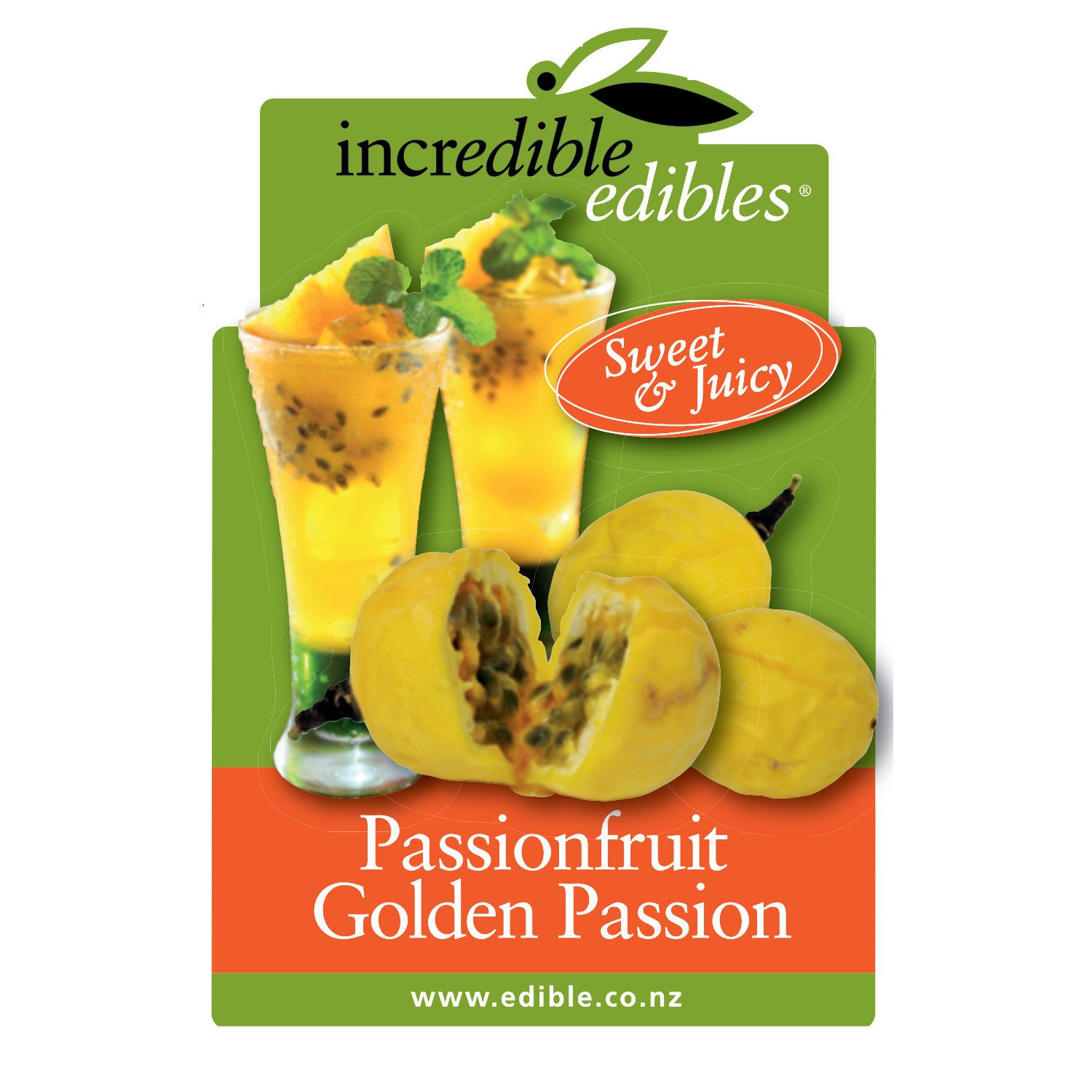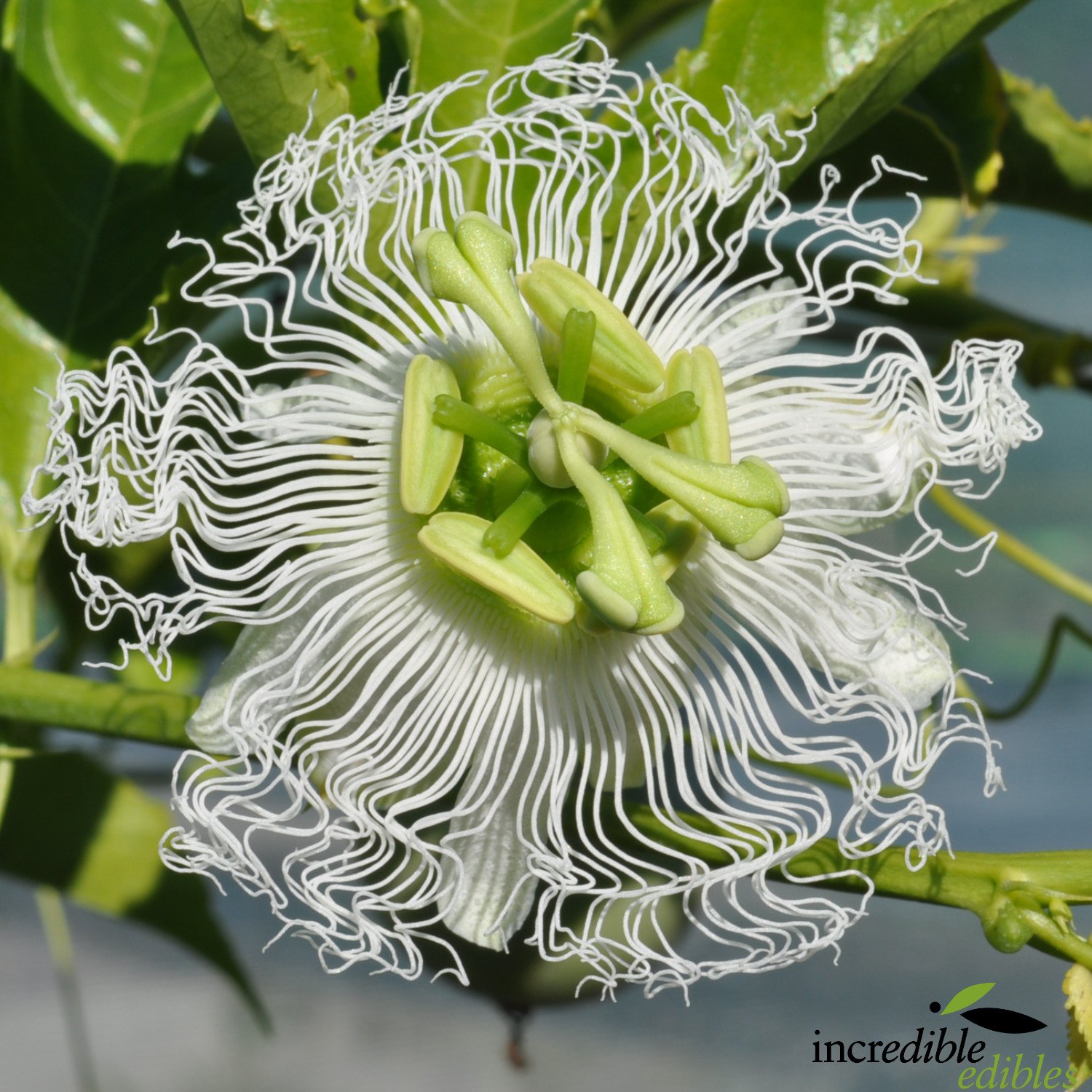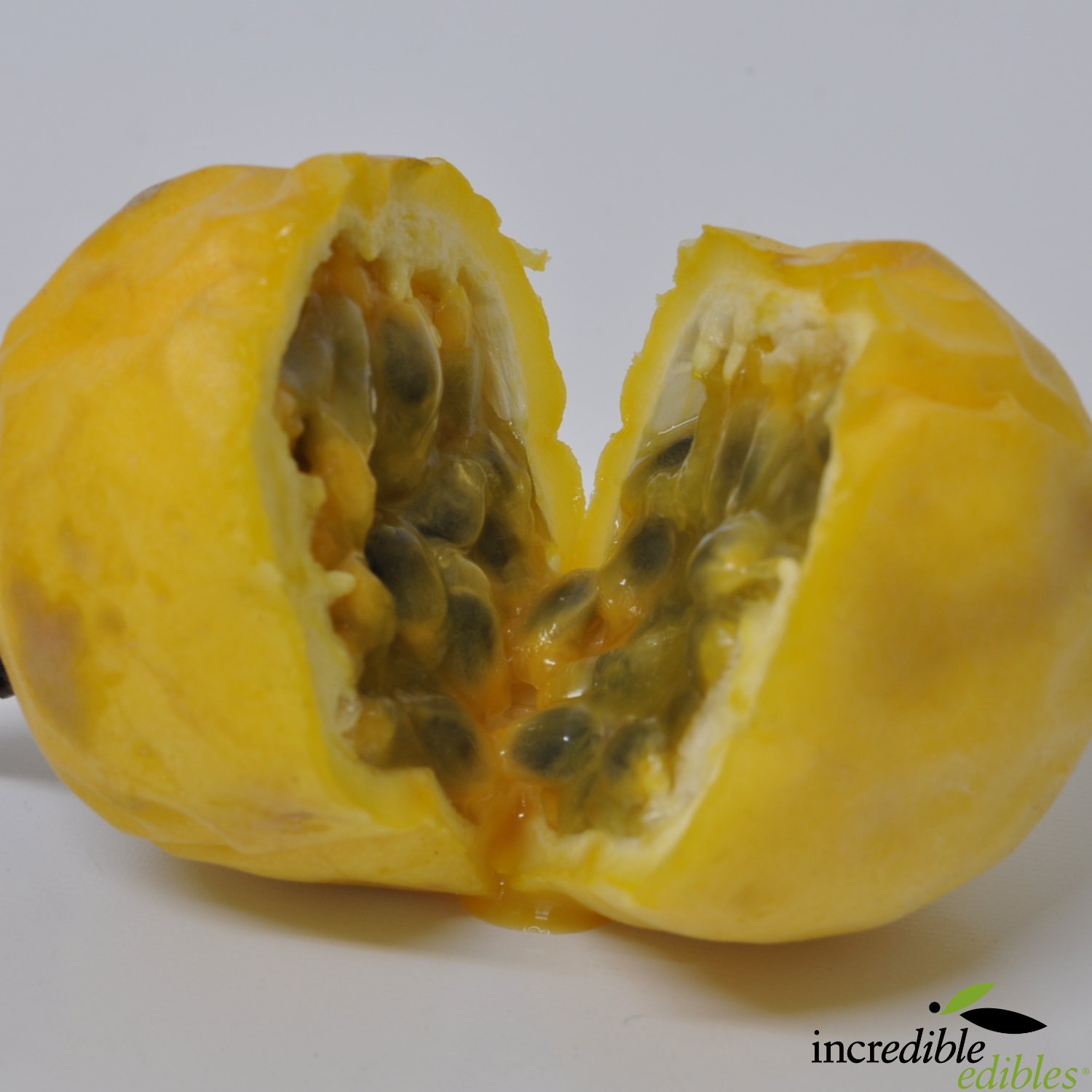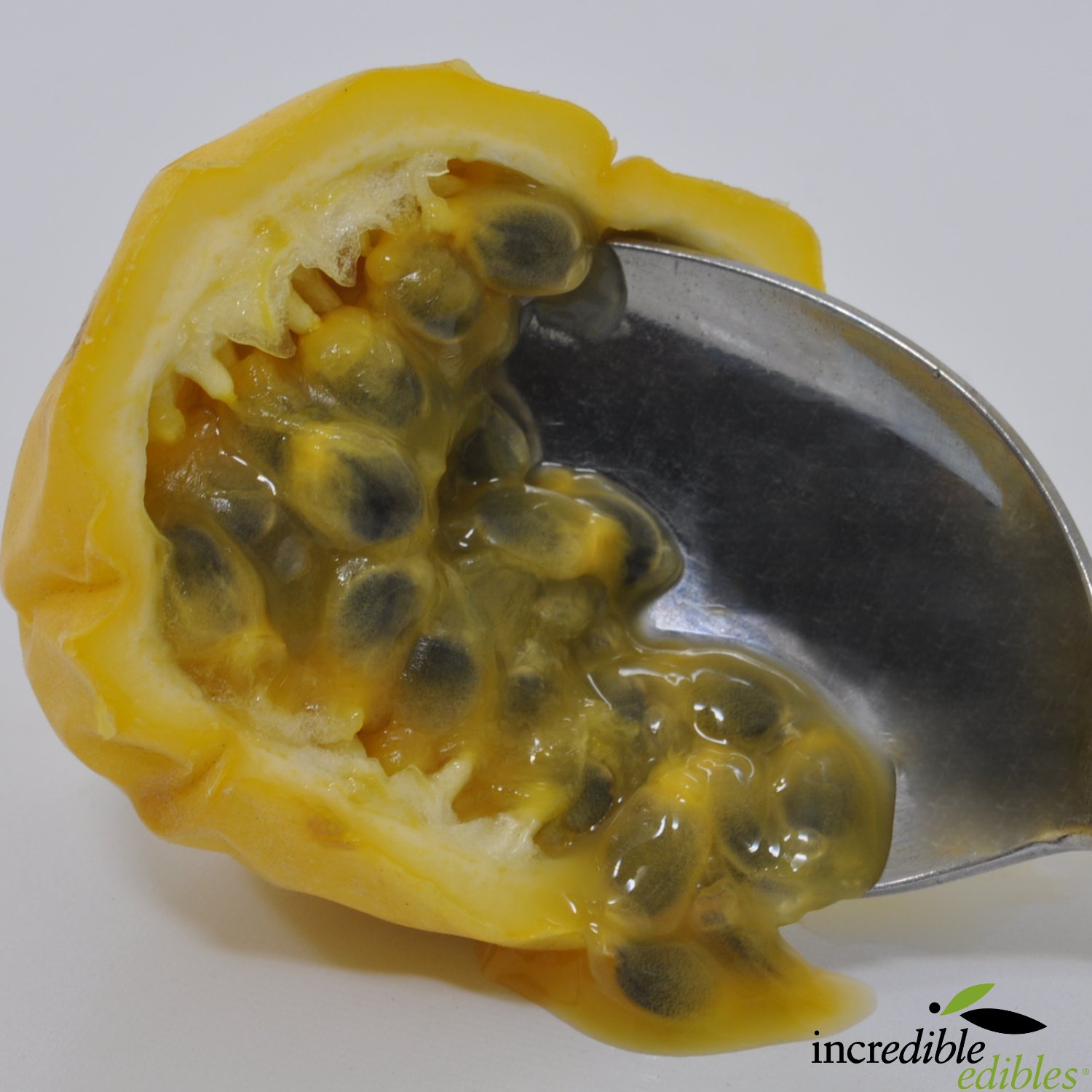Passionfruit Golden Passion
The passionfruit flower is attractive; 5-8cm across, white and formed on new seasons growth. The flowers only open for one day (pollinated by insects), with the best fruit set happening on warm days. The round fruit, 4-7.5cm, is green, then turns yellow when ready for harvesting. It has yellow-orange juicy, aromatic flavoured pulp filled with small black seeds. (Harvesting is from February to June).
Have lots and lots of passionfruit and like a good home-made Honey, this is our recipe Passionfruit Honey.
Passionfruit is a vigorous climber with tendrils and deeply lobed green leaves. Although evergreen, some leaves will fall off during winter-early spring in colder environments or if the plant is under stress (for example, waterlogged). The life expectancy of a Passionfruit is between 4-7 years.
Passionfruit enjoy lots of fertiliser; a balanced NPK fertiliser is required in spring, early summer, and autumn.
Pruning, fruit is formed on the current season’s wood, prune in early spring to encourage new growth. Prune hard one lateral annually. Train the vine up a fence or wall, removing all laterals until it reaches the height you require, then pinch out the top. Pruning establishes the framework of leaders from which laterals can grow. Cutting out some denser growth allows better air circulation and fruit development the following season. In addition, it will help with insect and disease prevention. Apply copper spray to prevent fungal diseases and spray with an organic insecticide if insects become problematic.
The passionfruit flower is attractive; 5-8cm across, white and formed on new seasons growth. The flowers only open for one day (pollinated by insects), with the best fruit set happening on warm days. The round fruit, 4-7.5cm, is green, then turns yellow when ready for harvesting. It has yellow-orange juicy, aromatic flavoured pulp filled with small black seeds. (Harvesting is from February to June).
Have lots and lots of passionfruit and like a good home-made Honey, this is our recipe Passionfruit Honey.
Passionfruit is a vigorous climber with tendrils and deeply lobed green leaves. Although evergreen, some leaves will fall off during winter-early spring in colder environments or if the plant is under stress (for example, waterlogged). The life expectancy of a Passionfruit is between 4-7 years.
Passionfruit enjoy lots of fertiliser; a balanced NPK fertiliser is required in spring, early summer, and autumn.
Pruning, fruit is formed on the current season’s wood, prune in early spring to encourage new growth. Prune hard one lateral annually. Train the vine up a fence or wall, removing all laterals until it reaches the height you require, then pinch out the top. Pruning establishes the framework of leaders from which laterals can grow. Cutting out some denser growth allows better air circulation and fruit development the following season. In addition, it will help with insect and disease prevention. Apply copper spray to prevent fungal diseases and spray with an organic insecticide if insects become problematic.
The passionfruit flower is attractive; 5-8cm across, white and formed on new seasons growth. The flowers only open for one day (pollinated by insects), with the best fruit set happening on warm days. The round fruit, 4-7.5cm, is green, then turns yellow when ready for harvesting. It has yellow-orange juicy, aromatic flavoured pulp filled with small black seeds. (Harvesting is from February to June).
Have lots and lots of passionfruit and like a good home-made Honey, this is our recipe Passionfruit Honey.
Passionfruit is a vigorous climber with tendrils and deeply lobed green leaves. Although evergreen, some leaves will fall off during winter-early spring in colder environments or if the plant is under stress (for example, waterlogged). The life expectancy of a Passionfruit is between 4-7 years.
Passionfruit enjoy lots of fertiliser; a balanced NPK fertiliser is required in spring, early summer, and autumn.
Pruning, fruit is formed on the current season’s wood, prune in early spring to encourage new growth. Prune hard one lateral annually. Train the vine up a fence or wall, removing all laterals until it reaches the height you require, then pinch out the top. Pruning establishes the framework of leaders from which laterals can grow. Cutting out some denser growth allows better air circulation and fruit development the following season. In addition, it will help with insect and disease prevention. Apply copper spray to prevent fungal diseases and spray with an organic insecticide if insects become problematic.





